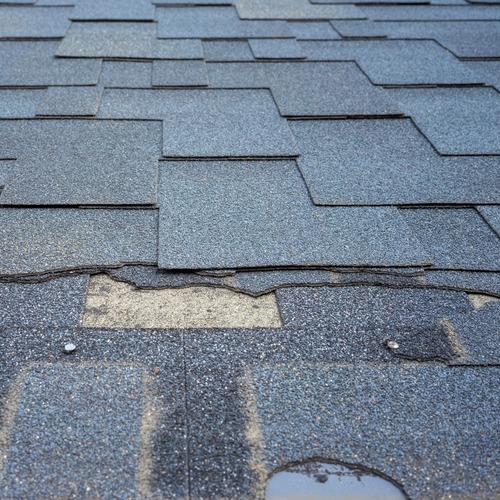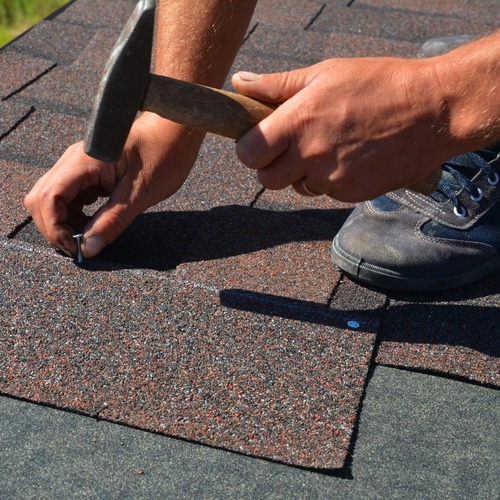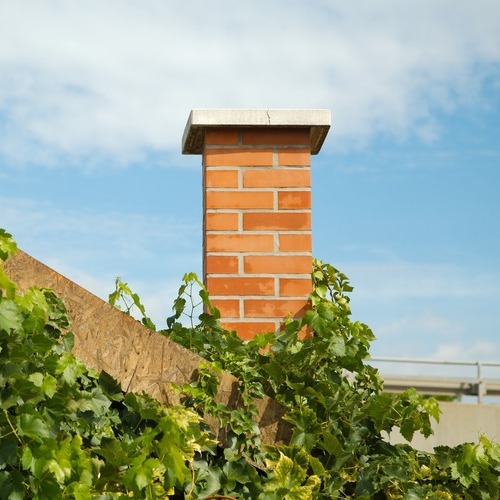
How do you know your roof has been damaged in a storm?
During the springtime, it isn’t unusual for some major storms to blow through. And in the aftermath of those storms, there is often a lot of damage and destruction. Because of that, roof storm damage repair in Salina, KS is often needed. However, a homeowner needs to know how a storm damages a roof so they can know what to watch out for. That will ensure you know when you should be reaching out to a professional to get the repair services you need.
What are the most visible signs of roof damage?
The sooner roof damage is discovered, the sooner the roof storm damage repairs can begin, because if they are left unaddressed, even the smallest damage can lead to more significant damage over time. Eight things that homeowners should be aware of after a storm include:
Damaged Shingles
If you notice several shingles are missing, or you can see cracked shingles, you most likely need roof storm damage repairs. Sometimes, those also are indications that your roof has reached its age limit and simply needs to be replaced. A roofing contractor and the insurance adjuster can advise which scenario applies to your roof. If it is storm damage, getting the roof fixed by reattaching loose shingles or replacing damaged and missing shingles is recommended as soon as possible.
Water Stains
Roof storm damage can be visible inside your home too in the way of water stains on the ceilings and walls. If you notice water bubbles, or bubbling or peeling paint, you most likely need roof storm damage repairs.
Poor Ventilation
Attic ventilation is essential to the health of a roof. When the ventilation isn’t working properly, you probably have some roof storm damage. Repairs will include not only the shingles, but also repairs, and maybe expanding the attic ventilation.
Tree Branches
With the high winds that typically accompany spring storms in Georgia, it is common to find tree branches on the roof. A good healthy roof can handle these, but if the velocity of the wind has tossed those branches down hard, it can leave you needing roof storm damage repairs.
Algae and Moss
Any areas of a roof that don’t receive much sun will often develop pockets of algae moss spores. While this can give a home a ‘quaint’ appearance and seems harmless, those spores are eating away at the shingles, and disrupting the matting underneath. Without getting immediate roof storm damage repairs addressed, your roof is susceptible to more damage. At the very least, a professional roof cleaning service is in order.
Damaged Flashing
Pay attention to any possible damaged roof flashing, the thin layered strips of metal around the chimney, skylights, vents, and along roof valleys. Flashing redirects water flow away from these areas that are prone to leak.
Gutters and Downspouts
Check the gutters and downspouts after each storm and have them professionally cleaned and inspected at least once a year to keep them healthy. They will fill up with foreign objects, branches, twigs, and leaves, become clogged, and unable to do the jobs that are intended.
Critter Infestation
When small critters take up residence in your attic, you need to have your roof inspected for roof storm damage repairs! Or your roof may have reached its maximum lifespan and needs to be replaced.
Can you repair the parts of the roof?
Maybe. If there is a damaged section that can be repaired and the rest of the roof is still stable, then yes, partial roof storm damage repairs are possible. The general rule of thumb in roofing is a roof that has 25% or more damaged area must be 100% replaced.
Can you just replace a section of a roof?
The same rule of thumb applies to roof replacement. If 25% or more of the roof is damaged, the entire roof will need to be replaced. A partial repair or replacement will leave your home with shingles or other roofing materials not uniform. Meaning some of the roofing will look brand new while the majority looks aged and likely faded.
Is patching a roof worth it?
If it is keeping your home from further damage, like water or wind, for the current time, then yes, a roof patch job will suffice until you can have complete roof storm damage repairs or replacement done.
Getting Down To The Dollar
Overall, the end gest to this article is to realize the importance of roof storm damage repairs. Letting these things ‘slide’ until you get around to it will put your home in a position of further damage – especially water damage.
Water damage is the worst of all types of damage your home could endure from a storm. Water begins to rot the wood and all surfaces will start to form mildew and mold, which puts spores into the air that can make your family sick. And family members with underlying conditions like asthma suffer the most.
If you’ve noticed any of the things that we’ve mentioned here, have a professional roofing contractor inspect the roof. They will provide you with a written report and estimate that should be shared with your insurance company as you file a roof storm damage repair or replacement claim.
We’d also like to remind you that if you need roof storm damage repair in Salina, KS or the surrounding area, you can always count on the team at Legacy Roofing of Kansas to provide any services you need. Give us a call at 785-838-8604 and we can get things started with an inspection to identify any damage that may have been caused by the latest storm.


